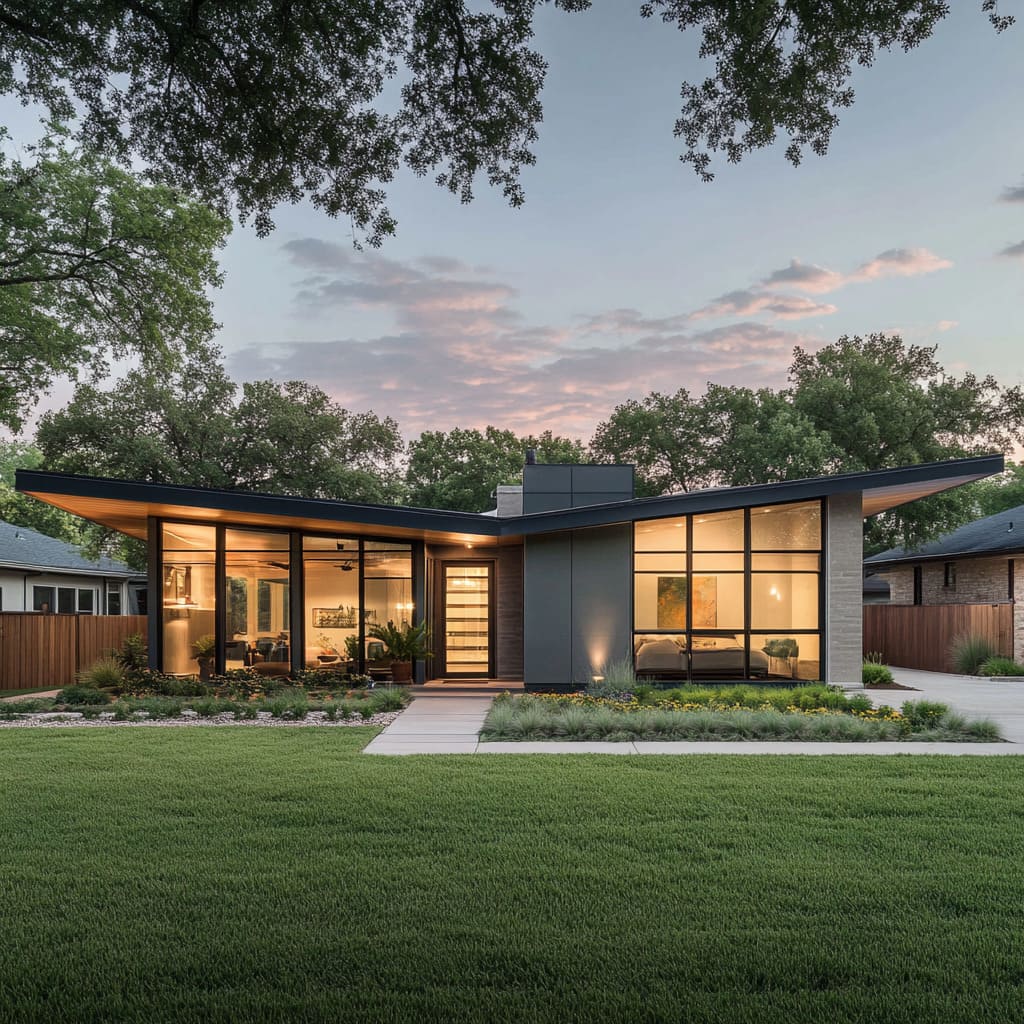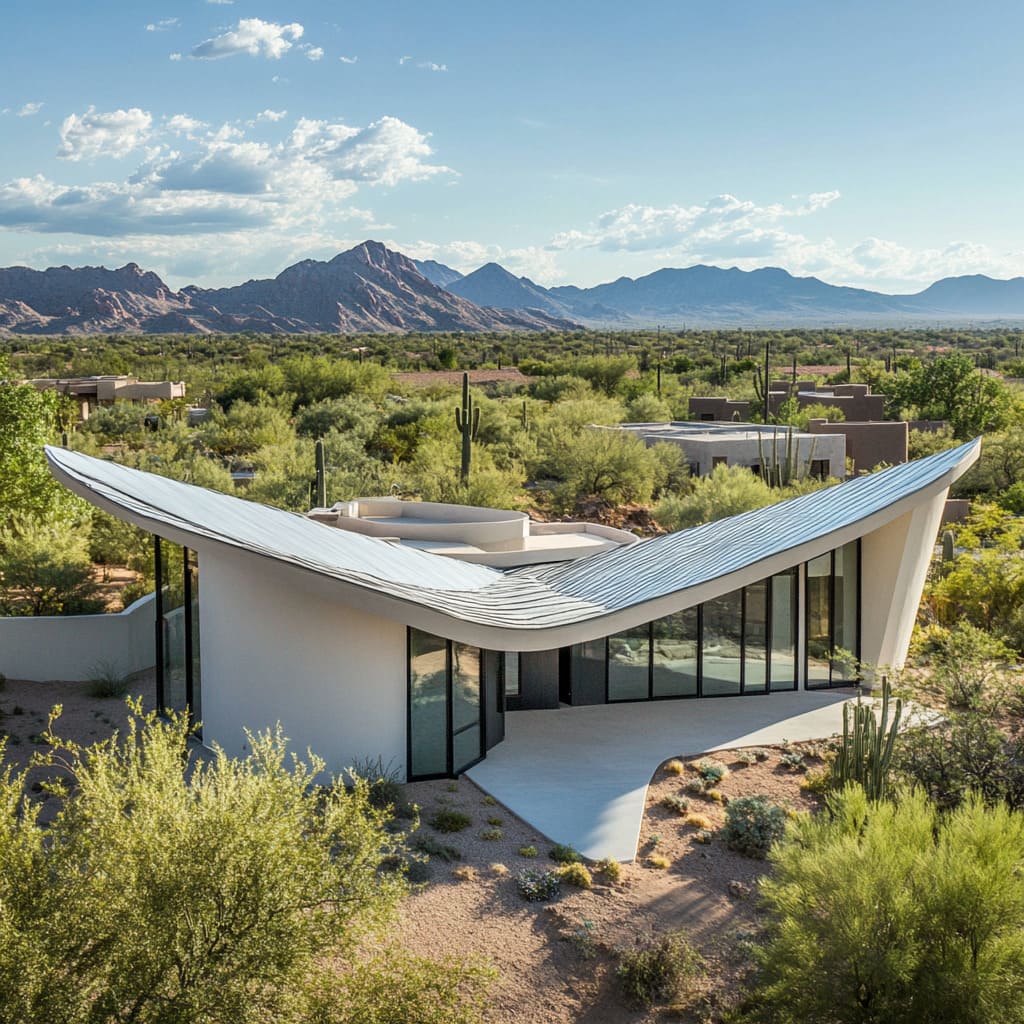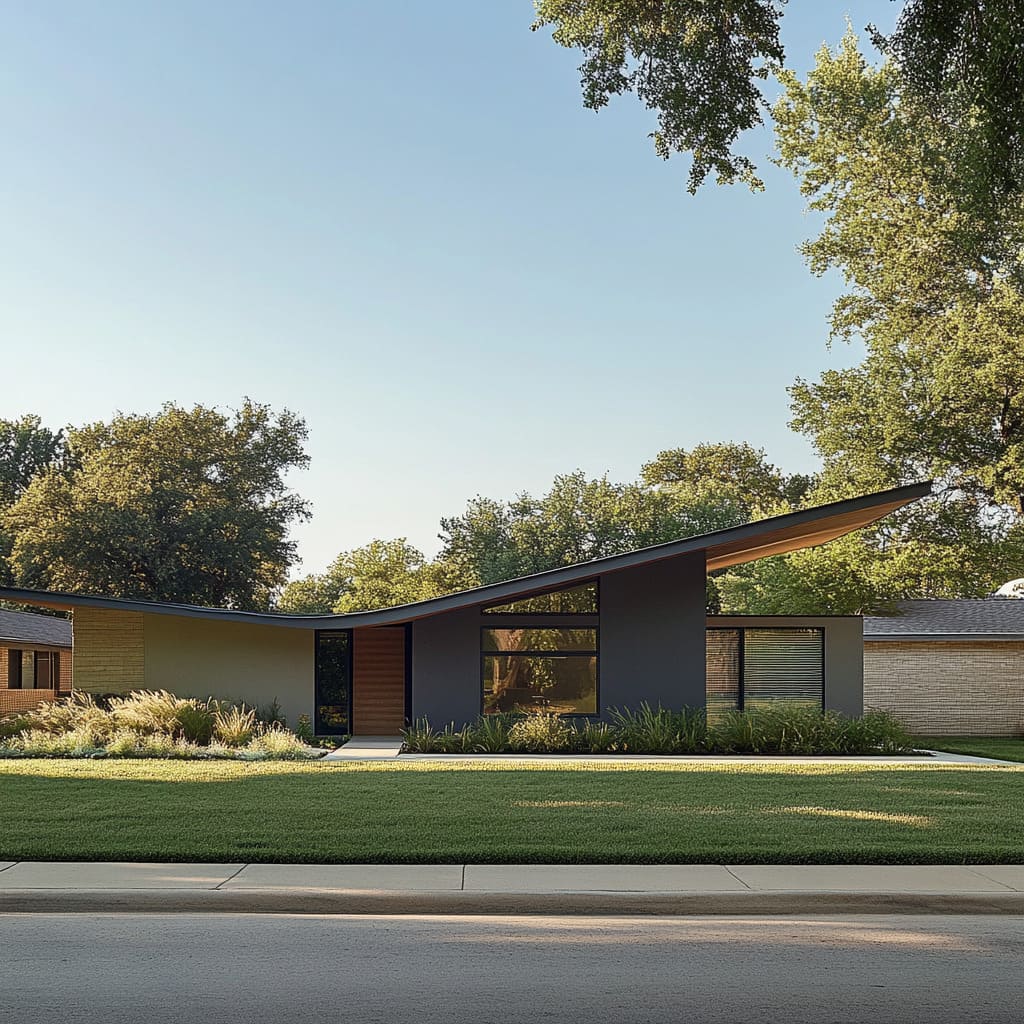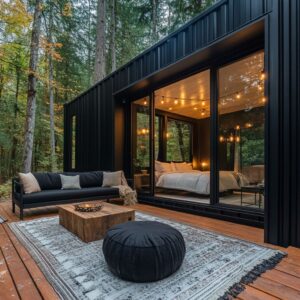Nature influences everyday life; it happens more often than you may realize. One area where butterflies have provided inspiration is architecture.
You’ve probably seen buildings with butterfly roofs and not realized that this humble insect is the inspiration behind it.
Understanding Butterfly Roofs
A butterfly roof is defined as a roof with two sections slating upward. The lower point of the two sections meets in the middle, creating an effect that looks like butterfly wings.
The curve of the roof can be gentle or sharp. The shape and style of butterfly wings are the inspiration for the V-shaped roofs that appear on houses and commercial buildings across the country.
It’s believed the butterfly roof was first invented by Le Corbusier in 1930 but didn’t become popular until the 1950s. It was around 1945 that the first butterfly roof appeared in the US; specifically the Geller House in Lawrence, Long Island.
At the time, the motivation for using the roof was the ability to fit long windows high on the walls, allowing light in while protecting privacy. The roof was used by the Alexander Construction Company which built over 2,500 houses in Palm Springs, Florida.
It was the catalyst that allowed it to spread across the US. There are several benefits to this style of roof:
- Increased air volume makes it easier to keep the house cool in the summer
- Adds a feeling of spaciousness
- Maximizes light entry
- Can be used to increase attic/storage space
- It’s surprisingly low cost to install
- Excellent at collecting rainwater
The butterfly roof has the same lifespan as any other roof, longer than that of a flat roof. Of course, it’s a good idea to undertake regular maintenance.
You simply need to find a reliable roofer near you. It doesn’t matter whether you’re looking for the best roofers in Kansas City or the ones in New York. Provided they understand roofs and have a good reputation, you’ll be in good hands.
Don’t forget, that the roof is the most important element of your home. It protects you from the elements and supports the walls, effectively tying the house together.
Other Designs Influenced by Butterflies
Your garden will almost certainly have butterfly-inspired elements, such as butterfly stepping stones. The right plants can even ensure you have real butterflies in your garden.
Butterflies have consistently been used in fashion, from being on clothes to having clothes shaped like butterflies. Their vibrant colors are commonly used to show life and vitality.
It’s not a new thing, butterflies were embroidered onto men’s waistcoats in the 18th century. Butterflies have influenced real estate in more ways than just the roof.
The stunning Tia Kharrat house copies the structure of butterfly eggs! Butterflies have also appeared frequently in the arts and literature.
They are known to inspire creativity and people draw great meaning from the transformation of caterpillars into butterflies. The butterfly effect is also an instrumental part of the chaos theory.
This is where the smallest of changes in one area can cumulate in a significant change, potentially altering the universe as we know it. The concept is often used when talking about the concept of time.
Moving even one grain of sand in the past could have far-reaching and unexpected consequences in the future, altering life as we know it. It’s named the butterfly effect because butterflies are instrumental in nature.
They are also particularly sensitive to minute increases in temperature. Their lifestyles have already been affected by climate change.
How the Butterfly Roof Is Saving the Planet
One of the most impressive features of a butterfly roof is that it is exceptionally effective at collecting rainwater. The slope of the roof encourages water to run into the middle.
Traditionally, this water is collected in a gutter and dispersed onto the ground. In more modern homes, the water collected from butterfly roofs is redistributed.
It can be held in containers, reducing the household’s dependency on mains water. This lowers the amount of water going through treatment works, reducing energy usage and water wastage.
In addition, the water collected can be directed back to nature, allowing channels underground to refill and encouraging the natural progression of water through the water cycle. As fresh water is a precious commodity on the planet, anything we can do to smooth the cycle will help the planet and the plants living on Earth.
Summing Up
The butterfly roof is more than a well-designed or stylish roof. It’s an important environmental aid.
While it’s not easy to change your existing roof, it is worth looking out for butterfly roofs and embracing them, especially if you ever have a chance to own a house with one. Commercial property owners, especially those who build property, should take note of butterfly roofs and nature’s inspiration.
It could save them money, attract buyers, and be good for the environment.







